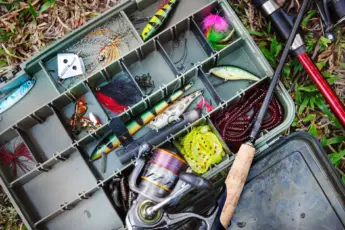Fishing in coastal waters is fun and challenging. Understanding tides and how to use them to your advantage is critical. I have fished inshore coastal waters across the east coast of the United States, the Bahamas, and the Caribbean. Without a doubt, planning tides is critical to having more success catching fish consistently. So which is it: best fishing tides incoming or outgoing?
How Do You Monitor Tides For Fishing
Undoubtedly tracking tides is easier than ever with today’s technology. It should be noted that tide monitoring goes beyond fishing but, more importantly, safe navigation. Vessels are more prone to running aground at low tide compared to high tide.
Without question, before heading out fishing either from shore or by boat, check the tide schedule. I try to avoid fishing at dead low tide as I do not do well fishing at this tidal stage. However, comparatively, many anglers can hone in on fish during low tide.
To monitor tides when fishing, I highly recommend downloading a tide app. Some of the best tide apps today is Windfinder and Tide Alert by NOAA. Once the app is downloaded, input your local information. Inputing local information will allow you to access tides in the vicinity you primarily fish quickly.
It should be noted that when fishing alternative locations, the tide information within the app is readily available. Therefore, enter the location of the fishing destination to determine the tides.
How Do Tides Impact Fishing
Without question, tides have a significant impact on fishing. I locally have a seven to eight foot tidal change from low to high and high to low tide. Think about the volume of water that is moving inshore before moving back offshore. Unquestionably the number is staggering. You are kidding yourself to think that that amount of water movement does not impact fish.
One of the most challenging times to catch fish is during a slack tide. Slack tides occurs from the transition from low to high tide and high to low tide. During slack, the water momentarily pauses before flowing in the opposite direction. I have encountered a solid bite while the tide is flowing, only to find it to shut down dead on slack tide. Conversely, non desirable fish will bite, but they are throwbacks compared to the prized gamefish.
Importantly, monitor and take note of slack tide when fishing to understand when you expect the fewest bites. Always focus your attention on the time when water is flowing in or out. Lastly, use slack tide to your advantage to grab a bite to eat before the action improves.
So Are The Best Fishing Tides Incoming Or Outgoing
I have over 15 years of experience fishing tides in coastal waters. Without question fishing an incoming tide is the most productive.
During an eight year career with a private corporation, I had the opportunity to fish the Bahamas consistently. During this time, I specifically fished the incoming tide for a multitude of reasons. Here is the breakdown below-
Water Clarity
Take a moment to think about water clarity on an incoming tide versus an outgoing tide. Water flowing from inland waters is not nearly as clean as that flowing in from the open ocean. For this reason, it is best to fish the incoming tide because fish more easily spot lures and baits. Conversely, always fish fluorocarbon leader line as gamefish become weary because of increased visibility.
Food Source
The open ocean is a vast body of water with ample food because of the abundance of sea life. In comparison, inland waters are fertile grounds but not as fertile as offshore waters.
As the tide shifts from outgoing to ingoing, baitfish, crustaceans, and other marine life flow inland. As a result of the influx of food, gamefish begin to feed feverishly. Focus your attention on the incoming tide versus the outgoing tide.
Types Of Fish
The number of species living in the world’s oceans is perplexing. While not all offshore fish venture inland, you would be surprised at the amount that do.
I focused my attention on fishing the incoming tide in the backwaters of Abacos in the Bahamans at night because of the snapper bite. My calendar was set on all incoming tides during the evening because it always led to success.
Without question, as food drifts from offshore to inshore the bite turns on. Therefore, focus your time on fishing incoming tides.
Best Fishing Tides Incoming Or Outgoing: Incoming
The source of food is the key to catching more fish. When baitfish and other edible marine life are available, the gamefish feed. I personally prefer to fish the incoming tide, especially when I am close to areas where the inland waters meet the open ocean. However, try your luck and see what works best for you the next time you’re out fishing







